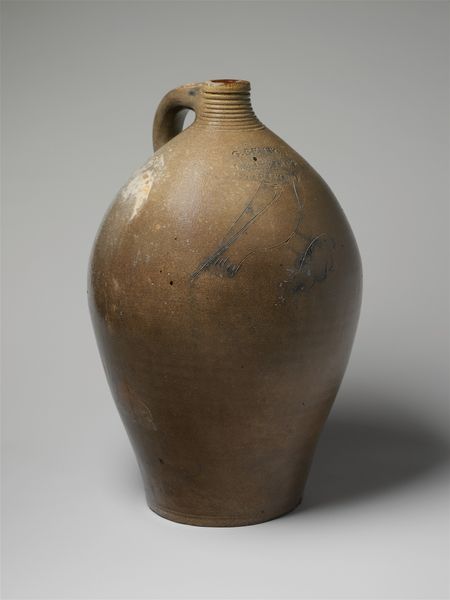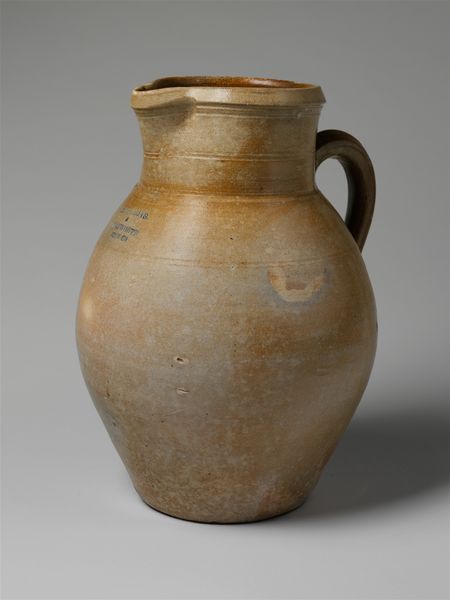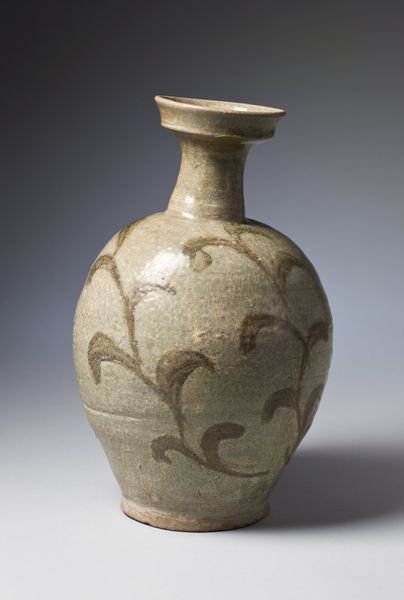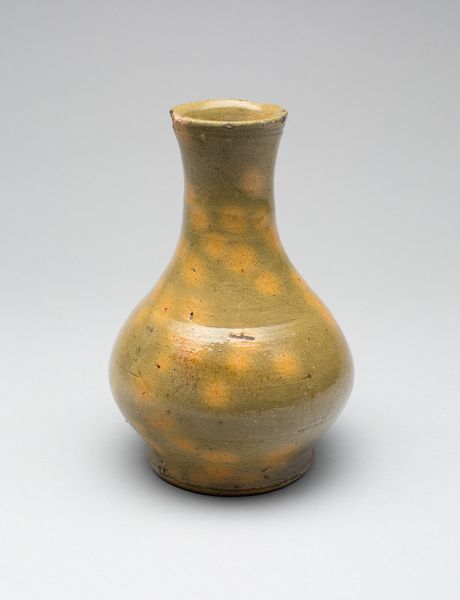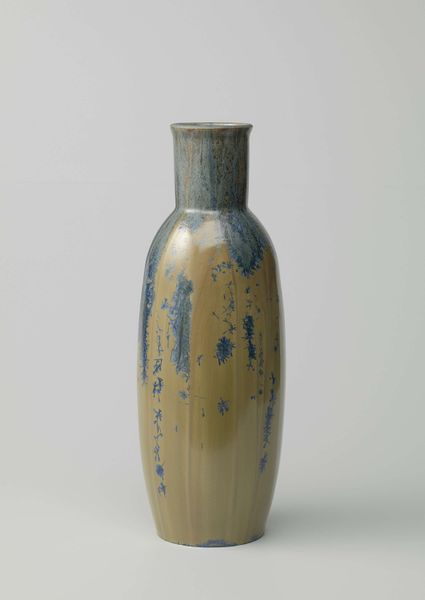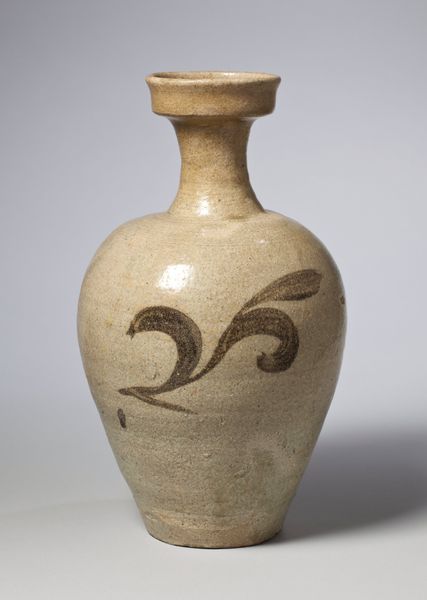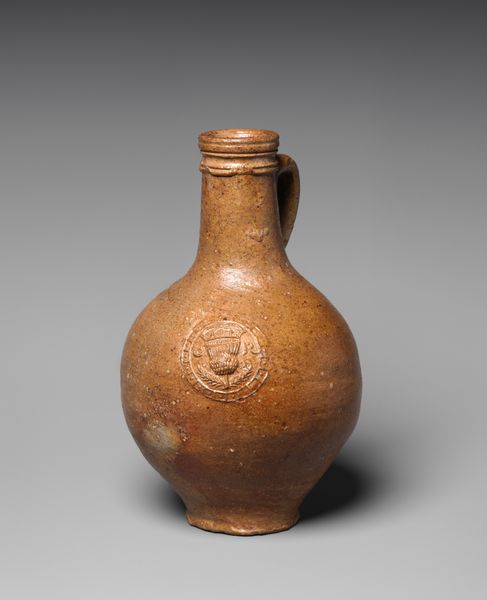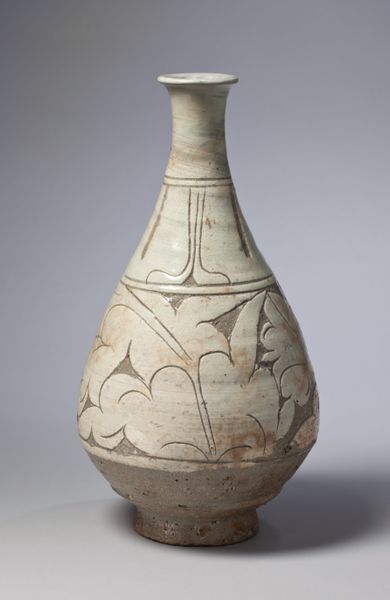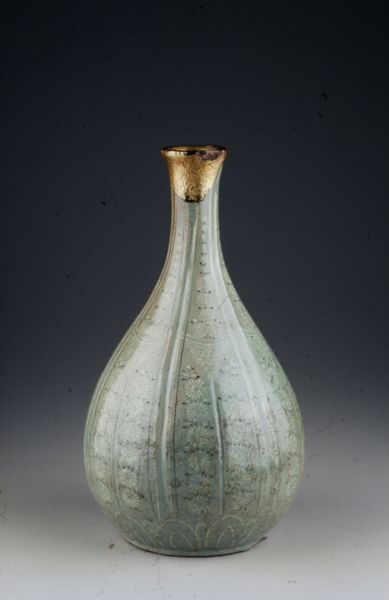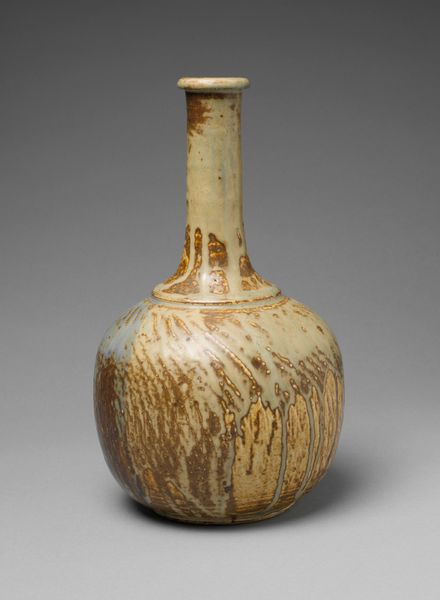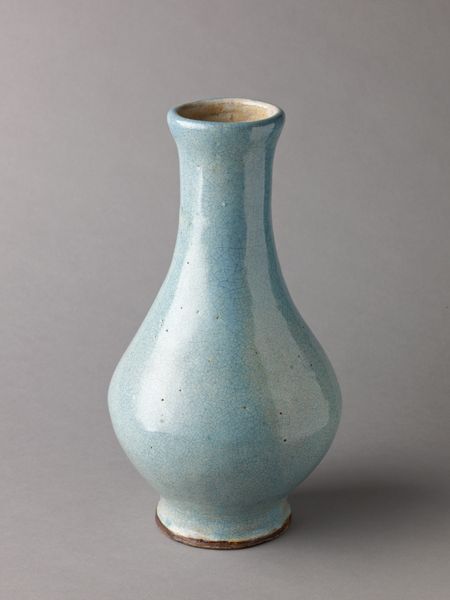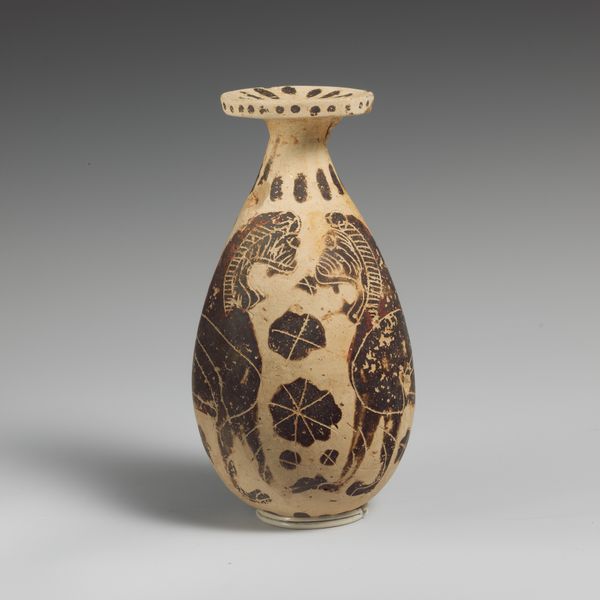
ceramic, earthenware
#
ceramic
#
earthenware
#
stoneware
#
folk-art
#
decorative-art
Dimensions: H. 18 in. (45.7 cm)
Copyright: Public Domain
Editor: We’re looking at a "Jug," made sometime between 1810 and 1840. It’s an earthenware piece. I’m really drawn to its simplicity and utilitarian feel; it’s so clearly made for everyday use. What symbols or narratives do you see embedded in this jug? Curator: This jug is indeed humble and evokes nostalgia, but its symbols connect to much deeper, shared memories. Consider the single floral motif—the six-petaled flower. Do those petals feel like decoration alone? Editor: I guess not… They’re so precisely drawn, not haphazard or randomly placed. It gives it importance, I think. Curator: Exactly. Think about similar motifs in other forms of early American folk art – quilts, for example. These floral patterns become shorthand for ideas of growth, abundance, and connection to the land. How might that resonate in a culture that was largely agrarian at the time? Editor: It's like a prayer for a good harvest or a celebration of nature’s gifts. The flower offers a concentrated message of optimism. Curator: Precisely. And even the vessel itself—a container—speaks to holding sustenance, both physical and spiritual. The form recalls ancient amphora and water vessels, a subtle echo of cultures that depended so intimately on the land. Editor: It’s amazing how something that looks so simple can carry so much meaning! I’m now noticing how the brown earth tones further ground the image in the everyday. Curator: Indeed. And understanding those silent symbols enhances our appreciation. It becomes more than a jug; it is a memory vessel holding layers of cultural meaning. Editor: That’s such a beautiful way to put it, a memory vessel. Thanks for highlighting the powerful symbolism in everyday objects.
Comments
No comments
Be the first to comment and join the conversation on the ultimate creative platform.
